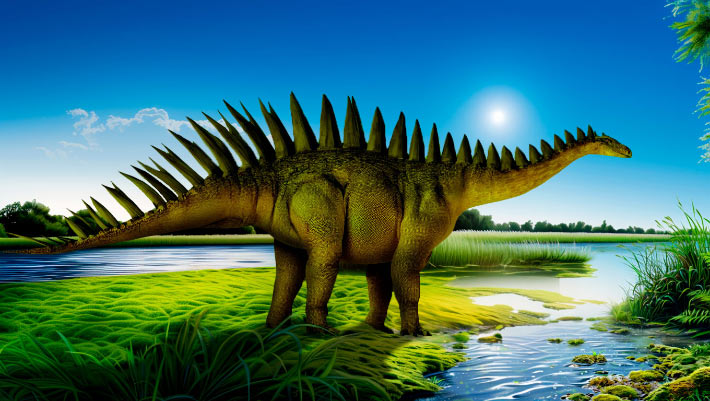Paleontologists have recovered the dinosaur skull material from beds of the Upper Jurassic Villar del Arzobispo Formation in Teruel, Spain, and confidently assigned it to a stegosaurian species called Dacentrurus armatus.
The name Stegosauria was first proposed in 1877 and the first stegosaur, Dacentrurus armatus, was described two years earlier.
Stegosauria is a small clade of thyreophoran dinosaurs that includes some iconic and recognizable members, such as the genus Stegosaurus.
They were quadrupedal herbivores mainly characterized by two rows of osteoderms (plates and spines) that extend from the neck to the tail end.
The stegosaurs are known from, at least, the Middle Jurassic to possibly the Late Cretaceous in sediments from almost worldwide, but mostly represented by single partial skeletons.
The stegosaurian skull material is remarkably fragmentary and scarce in the fossil record.
Nearly half of the current scientifically recognized species of stegosaurs do not preserve skull material.
In a new study, Fundación Dinópolis paleontologists Sergio Sánchez Fenollosa and Alberto Cobos examined the skull of Dacentrurus armatus, a species of stegosaurian dinosaur that lived around 150 million years ago in Europe.

“The detailed study of this exceptional fossil allowed us to reveal previously unknown aspects of the anatomy of Dacentrurus armatus, the quintessential European stegosaur,” Dr. Sánchez Fenollosa said.
“Dinosaurian skulls are rarely preserved due to the extreme fragility of their bones.”
“This discovery is key to understanding how stegosaurian skulls evolved.”
“Furthermore, alongside the anatomical study, we also proposed a new hypothesis that redefines the evolutionary relationships of stegosaurs worldwide.”
“As a result of this work, we have formalized the definition of a new group called Neostegosauria.”
According to the researchers, Neostegosauria includes medium to large-sized stegosaurian species that lived in what is…
Read the full article here

